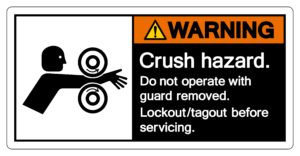Danger Within Reach
Leave a CommentHow far away from a hazard should you stay? Your parents or grandparents would probably have told you to stay far away, but what are you to do when a hazard is present, and you must work around or near the hazard? And what exactly is a hazard? ISO 12100 Safety of machinery – General principles for design – Risk assessment and risk reduction defines a hazard as a “potential source of harm.”
Where would a designer of a machine or product start if they wished to protect the user from a known hazard? Consensus standards are a great place to begin the quest for safety. (more…)




